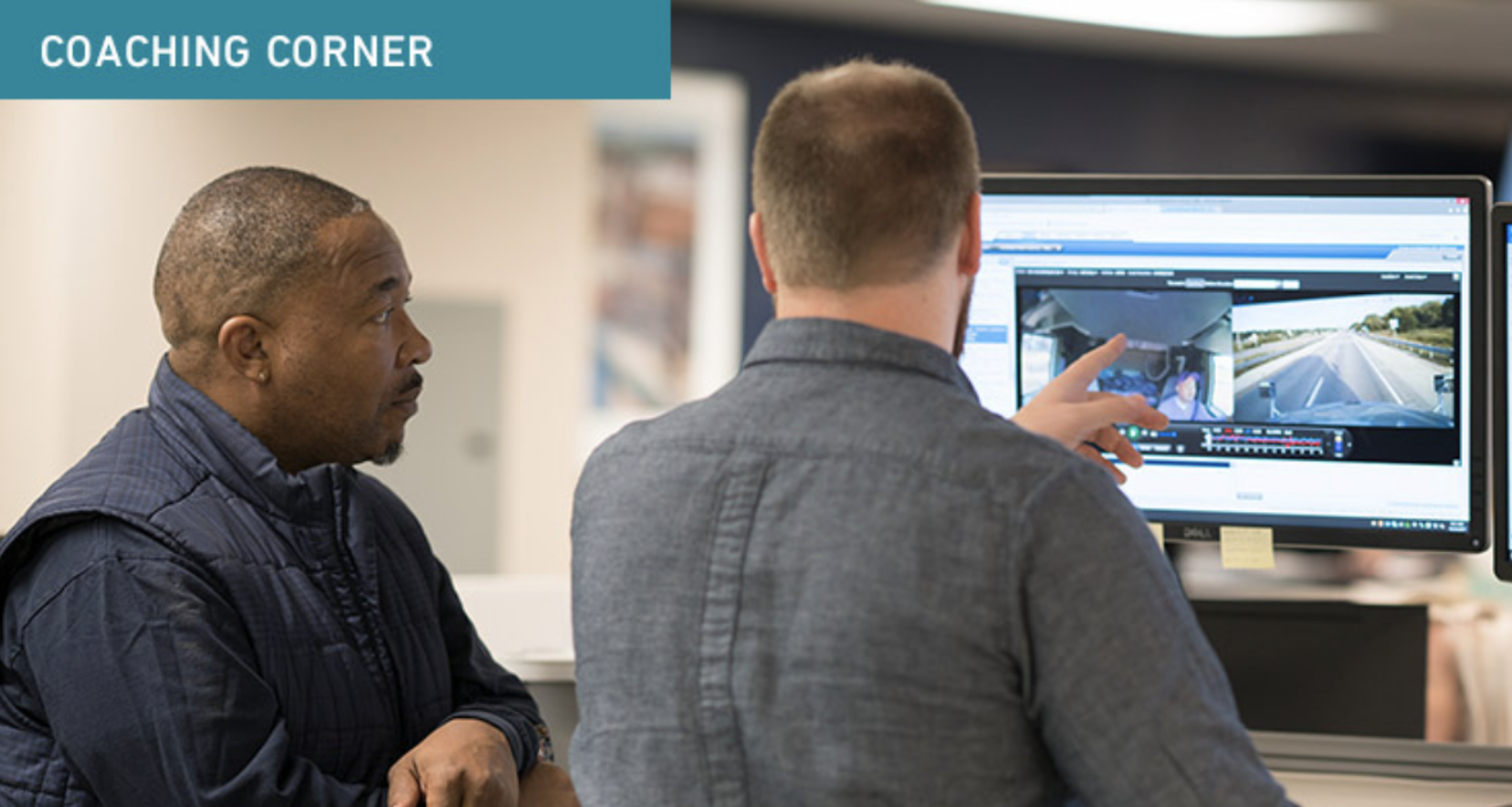An Evolution in Driver Coaching: How Video Changed the Game

As a longtime transit driver, Marvin Wilkins had more than a million safe miles.
Though he stopped driving in 2010, as safety and training supervisor for Keolis, today Wilkins draws on his own driving experience in coaching his drivers. And he cares just as much about safety now as he always has.
Wilkins has seen a lot of change in driver coaching over the years. After all, he started coaching nearly 10 years ago at a Las Vegas-based transit company. Driver coaching techniques were drastically different then. We talk to Wilkins about how coaching has evolved over the years—and why it’s so much more efficient and effective today.
What It Meant to Be a Driving Coach In the Past
Marvin Wilkins, safety and training supervisor for Keolis, shares with his drivers the importance of not taking risks.Driver coaching always has been “a thing” in commercial transportation, Wilkins said. But it was a lot more cumbersome even 10 years ago than it is in 2018.
When Wilkins first started coaching in 2010, he would perform “live checks,” in which he jumped in his car and followed a bus driver around for half an hour.
Wilkins watched to make sure the driver was using turn signals, driving the speed limit, stopping at stop signs, and not running any red lights. Then, he’d drive ahead of the driver, trying to catch him or her in the middle of the route so he could board their bus.
“I’d have to park my car, get on the bus, and ride to the end of their route with them,” he recalled. “I watched their hands, made sure they were looking ahead down the road, and ensured they were looking both ways to check for traffic.”
If Wilkins saw a behavior he didn’t like—such as a driver coasting through a stop sign, pulling into a bus stop with his hazard lights on, or driving with only one hand on the steering wheel—he waited until the driver got to the end of the route, then he’d coach them in a short, five- to eight-minute driver coaching session on the spot.
The DriveCam Program Changes Driver Coaching Techniques
For years, that was how coaching was done, in real time. But that all started to change as the DriveCam® program became more and more popular among commercial fleets. Driver coaching always was part of the program. Even in the program’s earliest days, a representative met with individual drivers to view and discuss what occurred in the video.
But in 2003, DriveCam program coaching was formalized with the release of Lytx software, which included an area for documenting coaching notes. The coaching form originally was labeled a “counseling form,” but Lytx changed it to “coaching” based on client feedback.
The DriveCam program popularized coaching, Wilkins said, especially because of its ability to filter specific, unsafe behaviors that could otherwise be missed in a ride-along. Add to that the inefficiencies that go along with having to do live checks on a whole fleet of drivers, and the DriveCam program made coaching viable on a much broader scale.
At Keolis, where the fleet has more than 500 drivers, being able to coach on a broad scale is vital. Keolis driving coaches—it has about 250 of them—visit with drivers anytime a DriveCam event occurs.
“My goal is to make my drivers aware of what’s going on and find out, first of all, what kind of mindset they were in when the event happened,” Wilkins said. “I tell them, ‘if you see red, you go red'—meaning if you see a stop sign, stoplight or brake lights, you start slowing down. Why wait for the car in front of you to brake?”
Driving Trainers Bring Out the Best in Drivers
The DriveCam program has changed driver coaching techniques for the better, said Wilkins, who began coaching through the program when he went to Keolis in 2013. “Before, there were a lot of behaviors and safety incidents coaches couldn’t see,” he said. “With the help of the DriveCam program, coaches can see a lot more.”
Video shows coaches what happened before and after the event recorder is triggered, giving them a fuller perspective of the situation, Wilkins said. And it allows them to shape drivers’ habits in response.
“That’s what I’m looking at—habits,” Wilkins said. “I try to instill in my drivers that they have to look ahead every 15 seconds. By looking ahead, drivers can avoid any problems that might develop. It gives them time to slow down, stop, or avoid hazards.”
The DriveCam program has increased drivers’ awareness, inspiring them to adhere to safe driving practices more often, Wilkins said. At Keolis, they drive more safely than in the past. “They want to keep that light green all day long,” Wilkins said, meaning they want to drive safely enough not to trigger the event recorder. “That’s what they strive for. So they do a lot of the things right, which helps them in the long run.”
Wilkins views coaching as an opportunity to share his experiences, knowledge and skills with his drivers, giving them something back. He teaches the same principles today as he did in his first days as a coach.
“That is, I teach them the importance of being safe and not taking risks,” he said. “I do my best to help my drivers reduce and minimize unsafe behaviors with every opportunity. After all, safe driving keeps us all employed.”
Learn more about how the DriveCam program can help improve driver retention.
